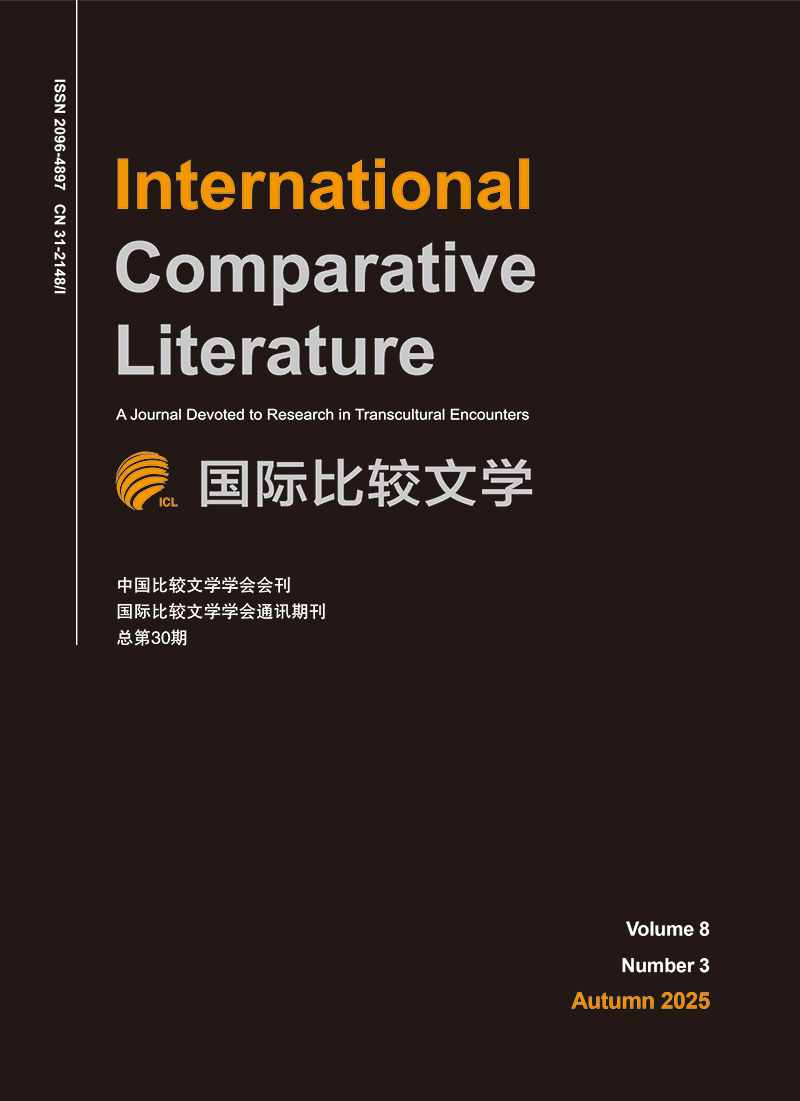通往古典精神的文艺复兴——兼论李长之重估“五四”新文化运动的内在理路与思想资源
Renaissance towards Classical Spirit: On the Inner Logic and Intellectual Roots of Li Changzhi’s Reevaluation of the May Fourth Movement
-
摘要: 抗战时期李长之对“五四”新文化运动的重估与其迎中国的文艺复兴方案乃是互为表里的关系。虽然否定了“五四”运动乃中国的文艺复兴这一流行说法,但李长之不仅不排斥对西方文化的吸收反而要求“整个的吸收”的主张,却又显示了其与文化保守主义者的区别。通过借鉴18、19世纪之交德国古典时代对古希腊的渴慕以及由此实现的对启蒙运动的超越,李长之不仅把批判矛头瞄准了“清浅的理智主义”,而且将理智与情感相结合的古典精神视作文艺复兴的目标,从而致力于从周秦时代去掘发中国传统文化精神。正是古典精神在中西文化中的互通,使得李长之对“五四”运动的批评没有走向文化保守主义,而是立足于审美现代性思路对中国传统文化进行的创造性转化。Abstract: During the Second Sino-Japanese War, Li Changzhi’s reevaluation of the May Fourth Movement and his welcoming of the Chinese Renaissance were mutually exterior and interior. Although Li Changzhi denied the popular saying that the May Fourth Movement was the Renaissance of China, instead of excluding the absorption of Western culture, he demanded its comprehensive absorption, which showed the difference between Li Changzhi and the forces of cultural conservatism. By drawing lessons from German Classicism’s longing for Ancient Greece in the late eighteenth and early nineteenth centuries and its transcendence of the Enlightenment Movement, Li Changzhi not only aimed his criticism at“superficial rationalism,” but also regarded the integration of rationality and emotion in the classical spirit as the goal of the Renaissance, thus devoting himself to the Zhou and Qin dynasties to explore the spirit of Chinese traditional culture. It is the interchange of classical spirit between Chinese and Western cultures that makes Li Changzhi’s criticism of the May Fourth Movement not turn to cultural conservatism, but to the creative transformation of Chinese traditional culture based on aesthetic modernity.
-
Key words:
- Li Changzhi /
- The May Fourth Movement /
- Renaissance /
- Classical Spirit /
- Traditional culture
-
[1] (英)以赛亚· 伯林:《浪漫主义的根源》,亨利· 哈代编,吕梁等译,南京:译林出版社, 2008年。 [2] [Berlin, Isaish. Langman zhuyi de genyuan (Roots of Romanticism). Edited by Henry Hardy. Translated by LYU Liang et [3] al. Nanjing: Yilin Press, 2008.] [4] (美)格里德:《胡适与中国的文艺复兴》,鲁奇译,南京:江苏人民出版社, 2005年。 [5] [Grieder, Jerome. Hu Shi yu Zhongguo de wenyi fuxing (Hu Shi and the Chinese Renaissance). Translated by LU Qi. [6] Nanjing: Jiangsu People’s Publishing House, 2005.] [7] 李长之:《李长之文集》(1—10卷),石家庄:河北教育出版社, 2006年。 [8] [LI Changzhi. Li Changzhi wenji (Writings of Li Changzhi). Vol.1-10. Shijiazhuang: Hebei Education Press, 2006.] [9] 梁刚:《理想人格的追寻——论批评家李长之》,北京大学出版社, 2009年。 [10] [LIANG Gang. Lixiang renge de zhuixun——lun pipingjia Li Changzhi (Chasing for Ideal Personality: On Critic Li [11] Changzhi). Beijing: Peking University Press, 2009.] [12] 梁漱溟:《东西文化及其哲学》,北京:商务印书馆1999年。 [13] [LIANG Shuming. Dongxi wenhua ji qi zhexue (Eastern and Western Culture and Its Philosophy). Beijing: Commercial [14] Press, 1999.] [15] 张蕴艳:《李长之学术心路历程》,北京:北京大学出版社, 2006年。 [16] [ZHANG Yunyan. Li Changzhi xueshu xinlu licheng (LI Changzhi’s Academic-Psychological Journey). Beijing: Peking [17] University Press, 2006.] [18] (美)周策纵:《五四运动——现代中国的思想革命》,周子平等译,南京:江苏人民出版社, 1999年。 [19] [ZHOU Cezong. Wusi yundong——xiandai zhongguo de sixiang geming (The May Fourth Movement: Intellectual [20] Revolution in Modern China). Translated by ZHOU Ziping. Nanjing: Jiangsu People’s Publishing House, 1999.] -

 点击查看大图
点击查看大图
计量
- 文章访问数: 519
- HTML全文浏览量: 90
- PDF下载量: 304
- 被引次数: 0



 下载:
下载:

